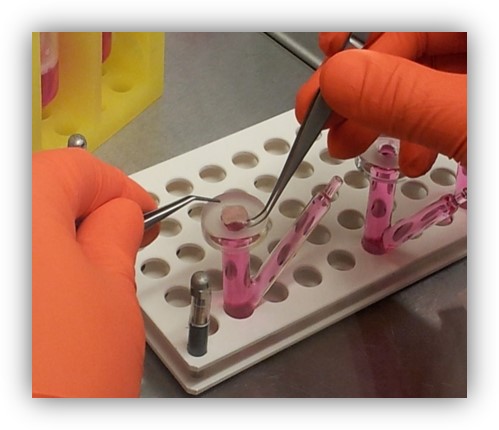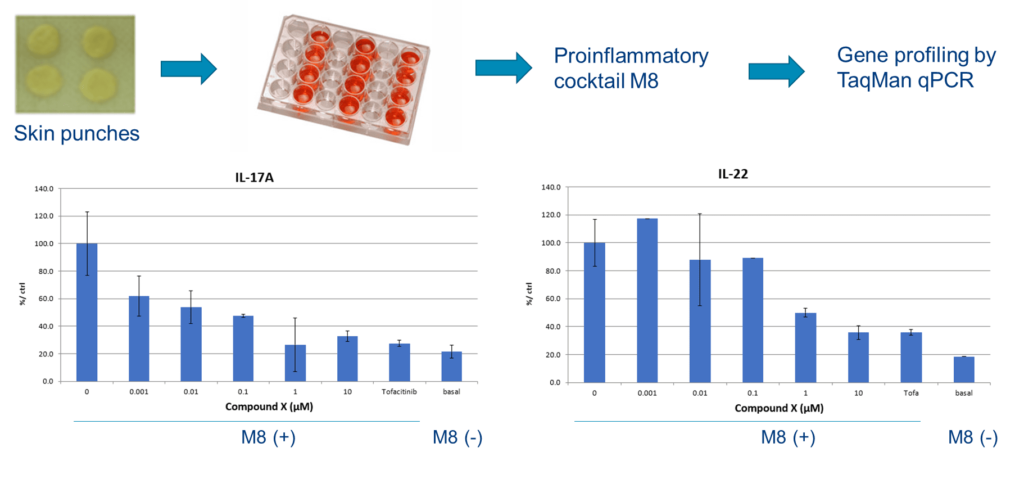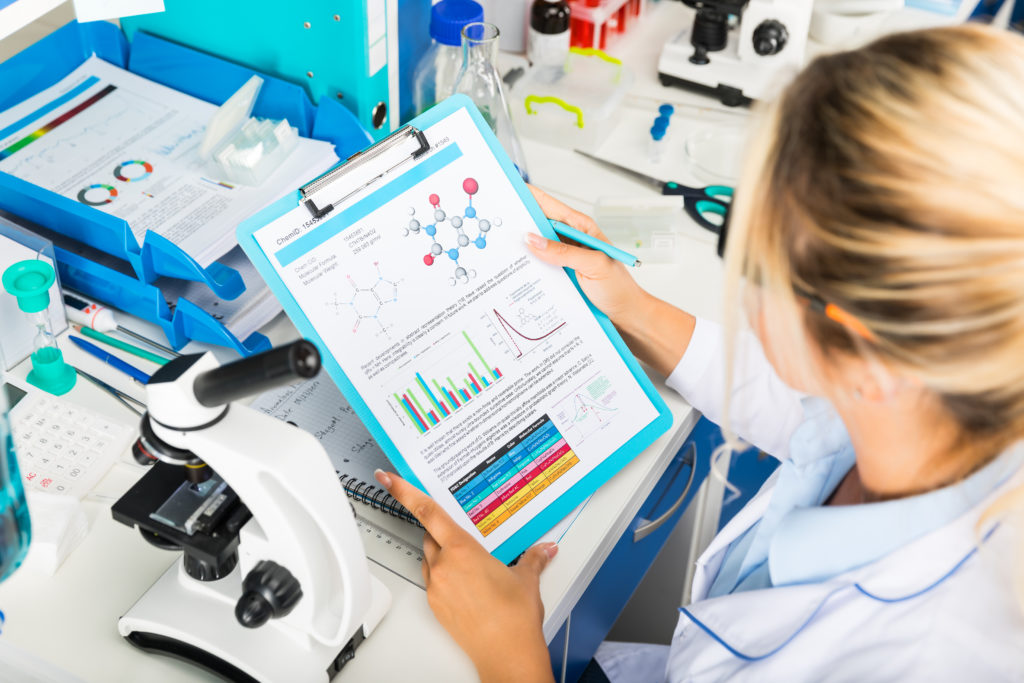
Ex vivo, which means in latin “out of the living”, refers to experimentation on living cells or tissues taken from an organism and cultured in a laboratory apparatus. The term ex vivo is differentiated from in vitro (“within the glass”) in that the tissue or cells need not be in culture.
Ex-vivo models, a great alternative to in vitro and in vivo assays
Ex vivo models are a powerful tool that provides valuable insights which mimic aspects of human physiology. They involve experimentation under more controlled and optimized conditions than is possible in in vitro and in vivo assays, which allows to identify a tissue response from particular stimuli.
Indeed, ex vivo models are less complex than in vivo models, which can be advantageous for early-stage drug screening. They provide a simplified system to understand the mechanisms of actions with reduced ethical and logistical challenge of animal models.
Oncodesign Services, an advancing research CRO using ex vivo models
Our in vitro department can customize the specific cellular assays to support your programs, including ex vivo experimentation.
Example of ex vivo experimentations:
- Trans-epithelial water loss (TEWL) on human skin explants
- Whole blood kinase assays
Our selection of in vitro and ex vivo testing solutions can be used to characterize the properties of your drug, demonstrate the efficacy of a new therapy, and test the safety at an early stage of development.
With extensive experience in drug development and using state-of-the-art facilities, we are pleased to offer you dedicated project management support for your Drug Discovery Process, in Oncology, Inflammation and Infectious Disease.
Case study with ex vivo models
1/ Ex vivo assays in dermal models
Primary human skin explants from healthy donors are used in a Franz cell device and treated either in the top chamber to simulate topical application or in the bottom chamber to simulate systemic exposure.
Typically used to analyze:
- Target engagement
- Skin barrier functionality
- Biomarker expression or inflammatory response, typically with PCR.



